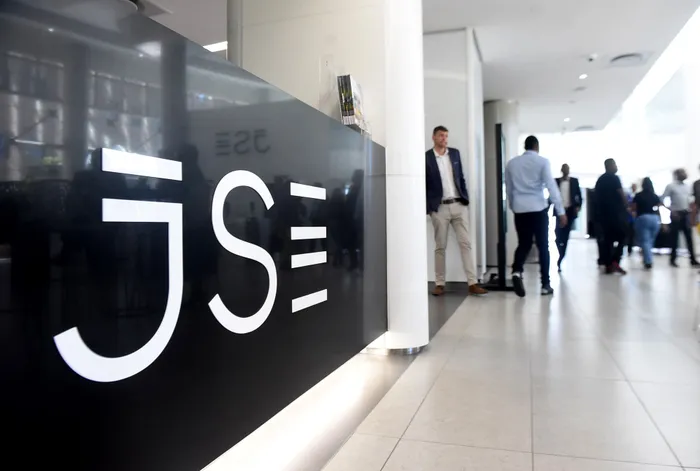US-China trade war threats: JSE and the Rand under pressure

The JSE All Share index closeD the week in the green gaining more than 700 points for the week on 110 736 point or 0.6% higher than the previous Friday.
Image: Supplied
Last Thursday China blamed the US of creating “panic” over Beijing’s controls on rare earth minerals. The country, however, has shown willingness to open to trade talks to resolve a dispute that has threatened to reignite a trade war between the world’s two largest economies. “The US interpretation seriously distorts and exaggerates China’s measures, deliberately creating unnecessary misunderstanding and panic,” Ministry of Commerce spokesperson He Yongqian told a news conference, according to the state newspaper Global Times.
Some sell off from emerging markets assets usually accompanies such trade tensions. Profit taking after five weeks of unprecedented demand for precious metals also affected South African markets last Friday. Despite strong sell offs of especially resources on Friday, most indices on the JSE ended the week in the green.
The JSE All Share index broke easily through the 110 000 point, 111 000 point and 113 00 point (113 024) record level by Thursday, contracted on Friday but still close the week in the green gaining more than 700 points for the week on 110 736 point or 0.6% higher than the previous Friday.
The strong decline in the gold price last Friday with more than $100 per ounce, the platinum price, losing $94 per ounce and the palladium price moving lower with $122 pushed the commodity index on the day down by more than 6.2%. Precious metals over the week still gained with the gold price up by $208 per ounce, the platinum price traded higher by $26 per ounce and palladium price gained $76 per ounce. This healthy sale after weeks of strong gains normally is good for most markets. The inflation data for the US that will be released this coming week will indicate mostly in the direction that precious metal prices will take this coming week.
Although the Rand exchange rate also came under pressure for most of Friday, the currency still closed the week stronger than the previous week. The Rand/Dollar exchange rate appreciated by 11 cents to the dollar on R17.39/$. Against the UK pound the currency was mostly flat, ending the week 2 cents stronger at R 23.33/£ and against the Euro the currency also traded sideways as it gained only 3c over the week to close at R20.30/€.
The Brent crude price continues to move lower. At the close of Friday, a barrel traded on $60.94. This is more than $5 per barrel lower for the last seven trading days. The Central Energy Fund (CEF) indicated that by last Thursday, 16 October, the price for 95 petrol was 57c per liter and the price for diesel was 30c per liter over-recovered. This points to a substantial lowering in fuel prices at the beginning of November 2025.
US equities higher
Shares on Wall Street turned bullish despite uncertainty about the US government shutdown that now has lasted two weeks. It all seems as if the US-China trade issues were less disruptive as was reported on Thursday and US markets ended the week strongly. The Dow Jones industrial index traded 0.5% higher on Friday, gaining 1.6% over the week, while the S&P500 increased by 0.53% on Friday, recording a weekly increase of 1.7% and the Nasdaq followed the same pattern, trading 0.53% higher on Friday and 2.14% more than the previous week.
Prospects for this coming week
This coming week alle eyes will be on the release of the inflation rate data for both South Africa (Wednesday) and the US (Friday). It is expected that the CPI in South Africa had increased on an annual basis by 3.5% in September. This is higher than the annual increase in the inflation rate of 3.3% recorded for August. The rate is also higher than the lower inflation rate target of 3.0% set by theTreasury for the Reserve Bank’s Monetary Policy Committee (MPC) to meet, as well as the so-called “new” target of 3.0% asked by the Reserve Bank to be implemented. Analysts are of the opinion that the MPC will not lower its repo-rate at their final meeting next month.
For the US it is expected that its inflation rate on an annual basis will increase in September to 3.1%. This is higher than the 2.9% annual increase in consumer prices recorded in August 2025 and will point strongly to a decrease in the Federal Reserve’s bank rate at its next meeting in November. Elsewhere China will release its GDP economic growth rate for quarter three today. Canada, Great Britain, and Japan will also announce their annual inflation rates for September 2025 during the week. The prices for precious metals are expected to continue their bullish movement with the Rand stronger and share prices to remain strong.

Chris Harmse is the consulting economist of Sequoia Capital Management and a senior lecturer at Stadio Higher Education.
Image: Supplied
Chris Harmse is the consulting economist of Sequoia Capital Management and a senior lecturer at Stadio Higher Education.
BUSINESS REPORT